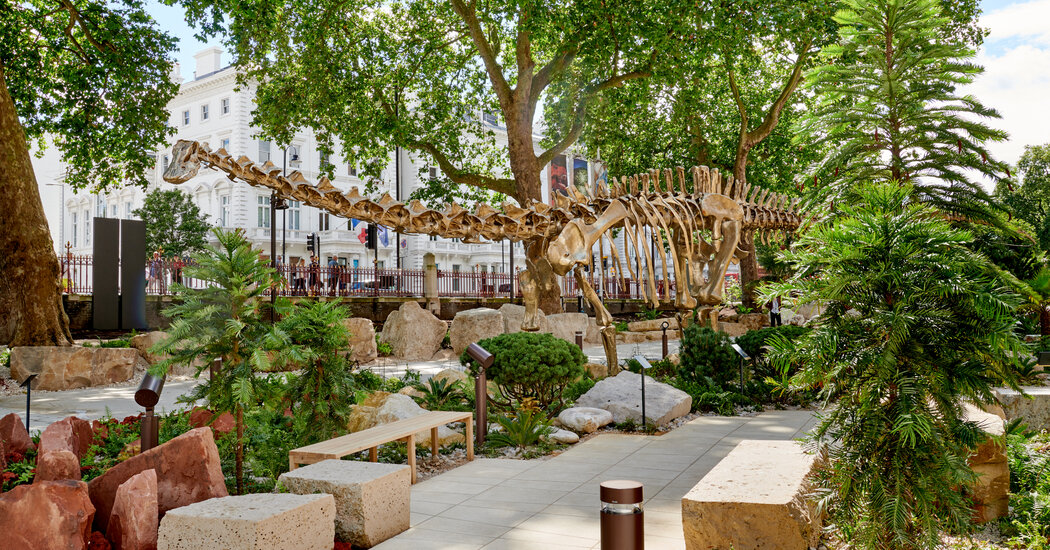This newly redesigned space at the Natural History Museum in London traces 540 million years of the past while creating an outdoor laboratory for the future.
As visitors walk through the new Evolution Garden at the Natural History Museum in London, they will journey through 540 million years of shifting ecosystems in 15 minutes. Every yard or so, they will leap forward five million years, from Cambrian seas swarming with trilobites to Jurassic forests dominated by dinosaurs to the palm-fringed tropical England of the Paleocene Epoch.
This immersive experience aims to widen the lens through which visitors view life, preparing them for the museum’s exhibits that explore Earth’s deep history.
“What you see outside in the world is just a snapshot of a much bigger story,” said Paul Kenrick, a principal researcher at the museum, in a video interview. “The garden is about coming to grips with the scale of geologic time and the enormity of change that has happened.”
This outdoor gallery is just as focused on the future as it is on the past. It is part of a revamped five-acre green space that opened in July after a two-year redesign. And it will become one of the most intensely studied urban environments in the world. Working with the community, the museum’s researchers will wield the latest technologies — including devices that can record sound inside trees or vacuum DNA from the air — to help wildlife thrive in cities.
The Evolution Garden begins at the exit of the London Underground’s South Kensington station, where many of the free museum’s 5.6 million annual visitors arrive. There, the garden designers built a ramp flanked by multicolored strata of ancient stones, creating the sensation that guests are emerging into a canyon. People can trace their fingers along Britain’s oldest rocks, including gray and pink gneiss, quarried from the Outer Hebrides islands of Scotland and nearly three billion years old.
